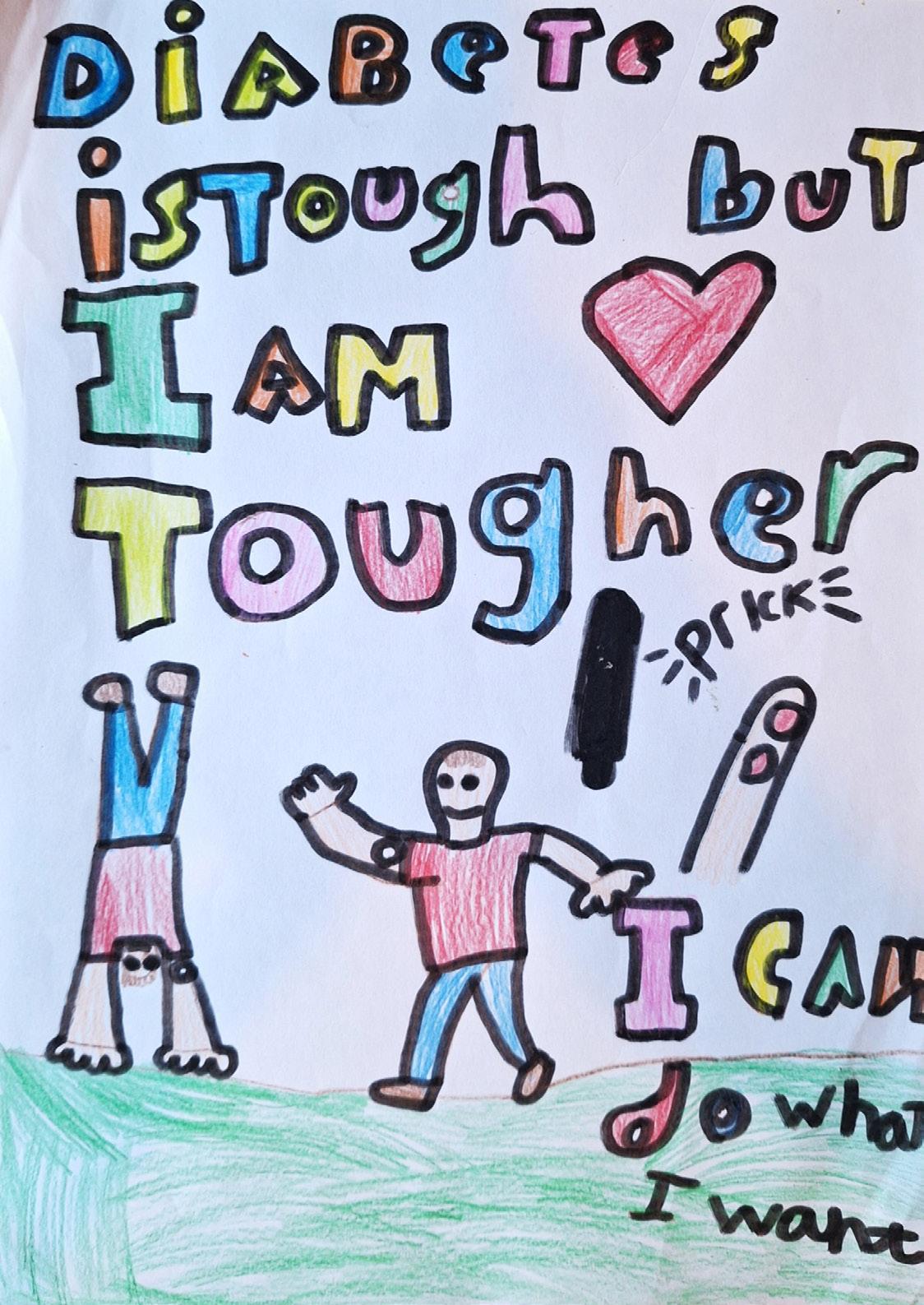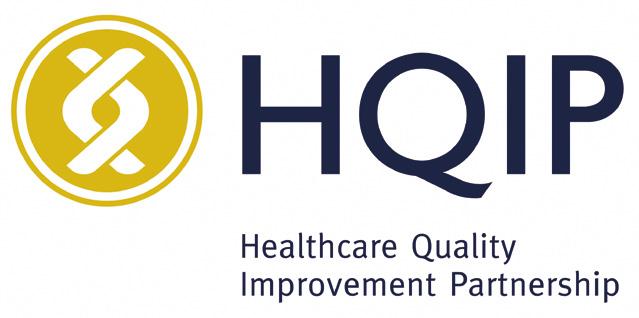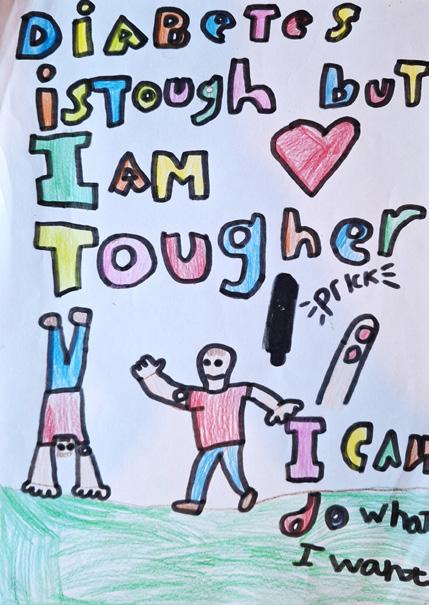


03.





03.

The National Paediatric Diabetes Audit (NPDA) is managed by the Royal College of Paediatrics and Child Health (RCPCH) and commissioned by the Healthcare Quality Improvement Partnership (HQIP) as part of the National Clinical Audit and Patient Outcomes Programme (NCAPOP).
HQIP is led by a consortium of the Academy of Medical Royal Colleges, and the Royal College of Nursing. Its aim is to promote quality improvement in patient outcomes, and in particular, to increase the impact that clinical audit, outcome review programmes and registries have on healthcare quality in England and Wales.
HQIP holds the contract to commission, manage, and develop the National Clinical Audit and Patient Outcomes Programme (NCAPOP), comprising around 40 projects covering care provided to people with a wide range of medical, surgical and mental health conditions. The programme is funded by NHS England, the Welsh Government and, with some individual projects, other devolved administrations and crown dependencies. www.hqip.org.uk/national-programmes
The NPDA has been reporting for 20 years. Data is submitted by healthcare professionals in Paediatric Diabetes Units (PDUs) in England and Wales about the care received by the children and young people with diabetes using their service.
The effectiveness of diabetes care is measured against NICE guidelines (NG18, NICE 2015) and includes treatment targets, health checks, patient education, psychological wellbeing, and assessment of diabetes-related complications including acute hospital admissions, all of which are vital for monitoring and improving the long term health and wellbeing of children and young people with diabetes. In 2023/24, 100% of PDUs participated in the NPDA.
Further information on the background, aims, and scope of the NPDA is available at: https://www.rcpch.ac.uk/work-we-do/ clinical-audits/npda/about
Extended analyses of the 2023/24 data, PDU level reports and posters, a glossary of terms of used in this report, and links to Excel files of data at PDU, regional network, and integrated care board (ICB) local health board (LHB) levels are available within the annual reports page: https://www.rcpch.ac.uk/resources/npdaannual-reports
Annual summary results are also available at PDU, regional network, NHSE region, and ICB/LHB levels via NPDA Results Online: https://npda-results.rcpch.ac.uk
Additionally, quarterly updates on key metrics are available at PDU, regional network, NHSE region, ICB/LHB, and country levels via the NPDA Frequent Reporting Dashboard: https://www.rcpch.ac.uk/resources/NPDAdashboard
Despite the incidence of paediatric diabetes in 2023/24 returning to near pre-COVID-19 rates, the prevalence of children and young people (CYP) with diabetes cared for in a PDU in England and Wales has increased by 16% since 2018/19. In particular, the number of CYP with Type 2 diabetes has increased by 72%

Overall the completion rate of health checks for Type 1 diabetes at all ages remains high. 92% of all expected health checks were completed, but there is considerable variation between PDUs ranging from 75% to 100%.
• For Type 1 diabetes: (12 years and over) 66% received all six essential health checks.
• For Type 2 diabetes: (12 years and over) 37% received all six essential health check.

The national (England and Wales combined) median HbA1c for children and young people with Type 1 diabetes has fallen to 60.0 mmol/mol. This is a 0.5 mmol/mol decrease from 60.5 mmol/mol in 2022/23. National Institute for Health and Care Excellence (NICE) guidelines recommend that CYP with diabetes should have a HbA1c target of 48 mmol/mol or lower.
The median HbA1c was 60.0 mmol/mol in Wales, compared to 60.5 mmol/mol in England.
• The national median HbA1c for children and young people with Type 2 diabetes has increased to 50.0 mmol/mol, from 49.5 mmol/mol in 2022/23
• Even after accounting for factors that influence HbA1c, there remained considerable variation in this measure by PDU.

There have been limited improvements in the national rates of microvascular and macrovascular abnormalities despite decreases in HbA1c and the increased use of technologies.

94% of CYP with Type 2 diabetes had a BMI in the overweight or obese range, compared to 42% of CYP with Type 1 diabetes

The percentage of children and young people with Type 1 diabetes using diabetesrelated technologies has increased. Insulin pump use has increased to 55% from 45% in 2022/23, real time continuous glucose monitor (rtCGM) use has increased to 79% from 49% in 2022/23, and hybrid closed loop system use has increased to 36%, from 15% in 2022/23
Fewer children and young people are using flash glucose monitors or modified flash monitors. However, inequalities in the uptake of all technologies persist
The use of advanced technology to deliver insulin and monitor blood glucose levels is associated with a lower HbA1c.


The rates of post-diagnosis hospital admissions in 2023/24 are stable and the incidence of DKA at diagnosis of Type 1 diabetes also remains stable at 26%.

Inequalities related to ethnicity and deprivation remain prevalent:
• The mean HbA1c for Black CYP with Type 1 diabetes has increased to 71.0 mmol/ mol from 70.0 mmol/mol in 2022/23 and remains higher than that seen in their White equivalents of 63.0 mmol/mol
• The average HbA1c gap remains the same between the most and least deprived quintiles: 66.0 and 60.0 mmol/mol respectively in 2023/24, compared to 66.8 and 59.9 mmol/mol in 2022/23
• The technology usage (rtCGM, insulin pumps and Hybrid Closed Loop systems) is less prevalent amongst ethnic minority groups and those living in deprived areas

1
2
PDU workforce numbers should be mapped against the guidelines published by the National Children’s and Young People’s Diabetes Network in 2024 (NCYPDN), taking into account the 16% increase in children and young people with diabetes in their care.
Action by: Integrated Care Boards across England and Local Health Boards across Wales
3
The variation in outcomes by geography should be investigated and addressed to ensure that children and young people with diabetes have equitable access and care for diabetes. Commissioners should use NPDA data (three monthly and annual PDU level reports), alongside other trusted data sources and peer review programmes, to assess equity of care within and between their regions.
Action by: Integrated Care Boards across England, Local Health Boards across Wales, the NHS England Getting It Right First Time (GIRFT) programme, the National Children and Young People’s Diabetes Network and the RCPCH.
Studies should be funded to understand the progression from childhood signs of micro- and macro-vascular disease to the development of future diabetes complications, and to inform preventative interventions.
Action by: Research funding bodies and diabetes charities such as Diabetes UK and Breakthrough T1D.
4
Diabetes services should offer holistic multidisciplinary support, including dietetic input, to children and young people with diabetes who are overweight or obese.
Action by: Integrated Care Boards across England and Local Health Boards across Wales.
5
Children and young people with Type 1 diabetes, regardless of ethnicity and social deprivation, should have equitable access to diabetes-related technologies. This could include engagement with families that may experience inequalities (such as those within the Core20PLUS5 framework) and healthcare professionals to better understand the barriers to equitable access.
Action by: Integrated Care Boards across England, Local Health Boards across Wales, the NHS England Getting It Right First Time (GIRFT) programme, the Children and Young People’s Diabetes Network, and diabetes charities such as Diabetes UK and Breakthrough T1D and the RCPCH.
6
Hybrid Closed Loop (HCL) systems should be offered to all eligible children in England and Wales in line with NICE Technology Appraisal guidance and the implementation plans in England and Wales.
The NPDA will continue to support the provision of data to inform the NHS England HCL 5-year implementation strategy.
Action by: Integrated Care Boards across England and Local Health Boards across Wales the NHS England Getting It Right First Time (GIRFT) programme, and the RCPCH.
SECTION 01
How many children and young people were receiving care from paediatric diabetes services in England and Wales?

There were 35,122 children and young people receiving care from PDUs in 2023/24: 33,437 (95.2%) in England and 1,685 (5.0%) in Wales (Table 1). There has been a steady increase in this prevalence since the pre-COVID-19 pandemic rates in England and Wales, from 30,155 in 2018/19. This represents a 4,967 (16.5%) increase in the numbers of children and young people cared for by a PDU in England and Wales.
Table 1: Number of children and young people by type of diabetes in 2023/24
*Includes cystic fibrosis diabetes, Maturity-onset diabetes of the young (MODY) and “unknown/unspecified” types of diabetes.
Engl and and Wa le s Engl and Wal es
Number of children and young people receiving care from a Paediatric Diabetes Unit in England
Figure 1: Total numbers of children and young people receiving care from PDUs in England and Wales, 2015/16 to 2023/24 *166 out of 173 PDUs submitted information to the 2019/20 audit, artificially lowering numbers reported.
The incidence of Type 1 diabetes (0-15 years) decreased from 31.1 new cases per 100,000 in 2022/23 to 27.6 in 2023/24, with 3,233 new cases diagnosed and managed in PDUs in this audit year. This
is close to the levels observed prior to the COVID-19 pandemic.
Figure 2: Incidence of Type 1 diabetes per 100,000 general population 0-15 years old in England and Wales, from 2013/14 to 2023/24. In 2019/20, 166 out of 173 PDUs submitted information to the audit.
There were 1,359 children and young people in England and Wales being cared for in PDUs with Type 2 diabetes in 2023/24. Of these, there were 292 new cases in 2023/24 – similar to the 268 new cases recorded in 2022/23. There has been a steady increase in this prevalence since the COVID-19 pandemic, from 790 in 2018/19 to 1,359 in 2023/24. This represents an increase of 569 (72%), over the last four years, in the numbers of children and young people with Type 2 diabetes cared for by a PDU in England and Wales.
What percentages of children and young people received all six recommended health checks?

There were increases in the completion rates for all individual ‘key’ health checks in 2023/24 compared to the previous audit year.
66% of those with Type 1 diabetes aged 12 and above received all six ‘key’ annual health checks (HbA1c, BMI, blood pressure, thyroid function test, albuminuria screening, and foot checks), compared to 63% in 2022/23.
37% of those with Type 2 diabetes aged 12 and above received all six ‘key’ health checks (HbA1c, BMI, blood pressure, cholesterol, albuminuria screening, and foot checks), compared to 36% in 2022/23.
Eye screening for retinopathy was reduced to biennial frequency from 2020/21 (unless an abnormal result was observed in a previous screen) in many NHS Trusts and Health Boards due to changes in national retinopathy screening guidance.
73% of those aged 12 years and above who had an abnormal eye screen in 2022/23 and who were also captured in the 2023/24 dataset had an eye screen in 2023/24. A similar proportion (75%) of those aged 12 years and above who had a normal eye screen in 2022/23 and who were also captured in the 2023/24 dataset also received an eye screen in 2023/24.
% of children and young people with Type
who completed a full year of care
Figure 3: Percentage of children and young people with Type 1 diabetes receiving individual health checks, 2015/16 to 2023/24
* Health checks completed for children and young people aged 12 or older.

In 2023/24 the overall completion rate for ‘key’ annual health checks received by all children and young people with Type 1 diabetes was 92%*, although completion rates varied from 75% to 100% (Figure 4). In 2022/23, the overall completion rate for all children and young people with Type 1 diabetes was 91%. What percentage of all recommended health checks were delivered by PDUs?
England & Wales (2023/24)
Engl and Wal es
Figure 4: Column chart of health check completion rates for all children and young people with Type 1 diabetes per PDU in England and Wales, 2023/24
*The overall completion rate represents the total number of the ‘key’ annual health checks completed divided by the total that should have been provided based on the age of those included in the analysis.
What percentages of children and young people with Type 1 diabetes received other recommended health checks at diagnosis?

88% received level three carbohydrate counting education within a fortnight of diagnosis, compared to 85% in 2022/23.
92% received screening for thyroid disease within three months of diagnosis, similarly to 92% in 2022/23. 87% received screening for coeliac disease within three months of diagnosis, compared to 88% in 2022/23.
Has there been an improvement in national HbA1c?
The national median HbA1c for children and young people with Type 1 diabetes in England and Wales was 60.0 mmol/mol (60.5 mmol/mol for England and 60.0 mmol/mol for Wales) in 2023/24. This represents an overall reduction of 0.5 mmol/mol from 60.5 mmol/mol in 2022/23. The median HbA1c at PDU level ranged from 55.0 mmol/mol to 70.5 mmol/mol.

The national median HbA1c for Type 2 diabetes was 50.0 mmol/mol, from 49.5 mmol/mol in 2022/23.
5: Median HbA1c for children and young people with Type 1 diabetes in England and Wales, 2010/11 to 2023/24
Figure 6 shows considerable variation in mean HbA1c for Type 1 diabetes at PDU level after case mix adjustment†. The national HbA1c mean after adjustment was 63.5 mmol/mol
PDUs in England
PDUs in Wales
95% level (2 SD) 99% level (3 SD)
Mean (England and Wales)
Number of children and young people with Type 1 diabetes
6: Funnel plot of mean adjusted HbA1c by PDU for those with Type 1 diabetes, 2023/24
†Characteristics such as age, duration of diabetes, sex, ethnicity and level of deprivation were utilised in a regression model to adjust HbA1c to take into account different case mixes between PDUs.
Variation was also seen in the median HbA1c recorded amongst children and young people with Type 1 diabetes across Integrated Care Boards in England and Local Health Boards in Wales, ranging from
to 63.5 mmol/mol.
28% (aged 12 and above) had a diastolic or systolic blood pressure in the hypertensive range (>98th centile after correction for age and gender), compared to 30% in 2022/23.
19% (aged 12 and above) had a total blood cholesterol of 5mmol/l or higher, compared to 20% in 2022/23.
(Cholesterol is no longer included in the health checks specified for Type 1 diabetes by NICE, however the NPDA continues to report the outcomes of the cholesterol tests undertaken and submitted as some PDUs consider it to merit continuing scrutiny).
42% (all ages) were overweight or obese (BMI>85th centile after correction for age and gender), similarly to 42% in 2022/23.
11% (aged 12 and above) had an abnormal retinopathy screen, similarly to 11% in 2022/23.
10% (aged 12 years and above) had micro- or macro- albuminuria, similarly to 10% in 2022/23.

46% (all ages) had a diastolic or systolic blood pressure in the hypertensive range (>98th centile after correction for age and gender), compared to 47% in 2022/23.
32% (all ages) had a total blood cholesterol of 5mmol/l or higher, compared to 30% in 2022/23.
94% (all ages) were overweight or obese (BMI >85th centile after correction for age and gender), similarly to 94% in 2022/23.
7% (aged 12 and above) had an abnormal retinopathy screen, compared to 6% in 2022/23.
21% (all ages) had micro- or macroalbuminuria, similarly to 21% in 2022/23.
risk factors for micro- and macro-vascular complications, 2023/24
Figure 7 compares the distributions of body mass index for children and young people with Type 1 and Type 2 diabetes in 2023/24. The body mass index distributions for NPDA data from 2019/20 are shown for comparison, along with the 1990 UK reference population.
UK1990 reference
2019/20 Type 1
2023/24 Type 1
2019/20 Type 2
2023/24 Type 2
Distributions of body mass index of children and young people with Type 1 and Type 2 diabetes in 2023/24 and 2019/20. The 1990 UK reference population is shown for comparison. 1st 5th 10th 25th 50th 75th 85th 95th 99th Centiles
SECTION 07
What percentages of children and young people with Type 1 were using diabetes-related technologies?
Across England and Wales:
55% were using an insulin pump, compared to 45% in 2022/23.
36% were using a hybrid closed loop system, compared to 15% in 2022/23.

79% were using a real time continuous glucose monitor (rtCGM); either combined with insulin injections or a pump, compared to 49% in 2022/23.
15% were using a flash glucose monitor or a modified flash monitor, compared to 37% in 2022/23, as CYP are moving towards more advanced methods of glucose monitoring.
(273/1,562)
Table 3: Percentages and numbers of children and young people with Type 1 diabetes using each technology.
*Denominator = the number of children and young people with Type 1 diabetes with a valid recorded treatment regimen.
**Proportion of all children and young people with Type 1 diabetes
SECTION 08
What was the average HbA1c for children and young people with Type 1 diabetes using different diabetes-related technologies?

Figure 8 shows the mean HbA1c for CYP with Type 1 diabetes on each treatment regimen, from least advanced (insulin injections) to most advanced technologies (HCL), left to right.
Although all treatment regimen types show an increase in mean HbA1c between 2021/22 and 2023/24, the increasing adoption of more advanced treatment regimens continues to drive an overall reduction in national mean HbA1c over the same period.
CYP using a hybrid closed loop system had the lowest mean HbA1c at 59.1 mmol/mol. Between 2021/22 and 2023/24, the number of CYP using HCLs has increased from 2,232 to 11,635, whereas the number using insulin injections alone fell from 4,985 to 1,455.
4,985
Total number 2021/22: 7,593 2022/23: 6,848 2023/24: 3,130
Total number 2021/22: 2,463 2022/23: 4,532 2023/24: 8,200
Total number 2021/22: 1,390 2022/23: 673 2023/24: 253
Total number 2021/22: 3,719 2022/23: 2,985 2023/24: 843
Total number 2021/22: 3,540 2022/23: 4,789 2023/24: 4,234
Total number 2021/22: 2,232 2022/23: 4,690 2023/24: 11,635
Figure 8: Mean HbA1c for children and young people with Type 1 diabetes using different combinations of treatment regimen and glucose monitoring in 2021/22 - 2023/24. Circle size represents the number of children and young people.
There was variation in usage of hybrid closed loop systems by children and young people with Type 1 diabetes across Integrated Care Boards in England and Local Health Boards in Wales, ranging from 1% to 70%.

26% of children and young people newly diagnosed with Type 1 diabetes presented with DKA at diagnosis in 2023/24 compared to 23% in 2022/23.
Figure 9: Percentages and numbers of children and young people with Type 1 diabetes admitted at least once for a diabetesrelated cause not associated with diagnosis, 2022/23 and 2023/24

28% of those with Type 1 diabetes and known outcome of psychological assessment (n=21,327) were assessed as requiring additional psychological support outside of multidisciplinary team meetings compared to 32% in 2022/23.
39% of those with Type 2 diabetes and known outcome of psychological assessment (n=614) were assessed as requiring additional psychological support outside of multidisciplinary team meetings compared to 41% in 2022/23.
NPDA results have shown persistent inequalities in HbA1c outcomes and use of diabetes-related technologies associated with ethnicity, deprivation, age, and sex. Presented here are four examples – the extended analysis is presented separately and can be viewed and downloaded from the NPDA annual reports page
10: Mean HbA1c by ethnic group for children and young people with Type 1 diabetes, 2013/14 – 2023/24. In 2019/20, 166 out of 173 PDUs submitted information to the audit.
11: Mean HbA1c by deprivation quintile for children and young people with Type 1
Figure 12: Use of rtCGM by ethnic category and deprivation quintile amongst children and young people with Type 1 diabetes: 2019/20- 2023/24. In 2019/20, 166 out of 173 PDUs submitted information to the audit.
England & Wales (2023/24)
Figure 13: Use of hybrid closed loop systems by ethnic category and deprivation quintile amongst children and young people with Type 1 diabetes: 2021/22- 2023/24. In 2019/20, 166 out of 173 PDUs submitted information to the audit.
The RCPCH Diabetes Quality Improvement Website provides multidisciplinary teams with the tools to identify, design and analyse their own interventions specific to the needs of the children and young people and their families that they care for.
A slide deck is available on the NPDA reports page for teams to customise with their own results, with prompts for team discussions around results, and links to relevant QI resources.
The Getting It Right First Time (GIRFT) programme has provided resources for paediatric diabetes units as part of their national review of services for children and young adults
with diabetes in England.
National Paediatric Diabetes Audit (NPDA) Report on Care and outcomes 2023/24
©2025 Healthcare Quality Improvement Partnership. Published by RCPCH March 2025
Healthcare Quality Improvement Partnership (HQIP)
128 City Road London, EC1V 2NX
Royal College of Paediatrics and Child Health
Royal College of Paediatrics and Child Health
5-11 Theobalds Road, London, WC1X 8SH
The Royal College of Paediatrics and Child Health (RCPCH) is a registered charity in England and Wales (1057744) and in Scotland (SC038299).